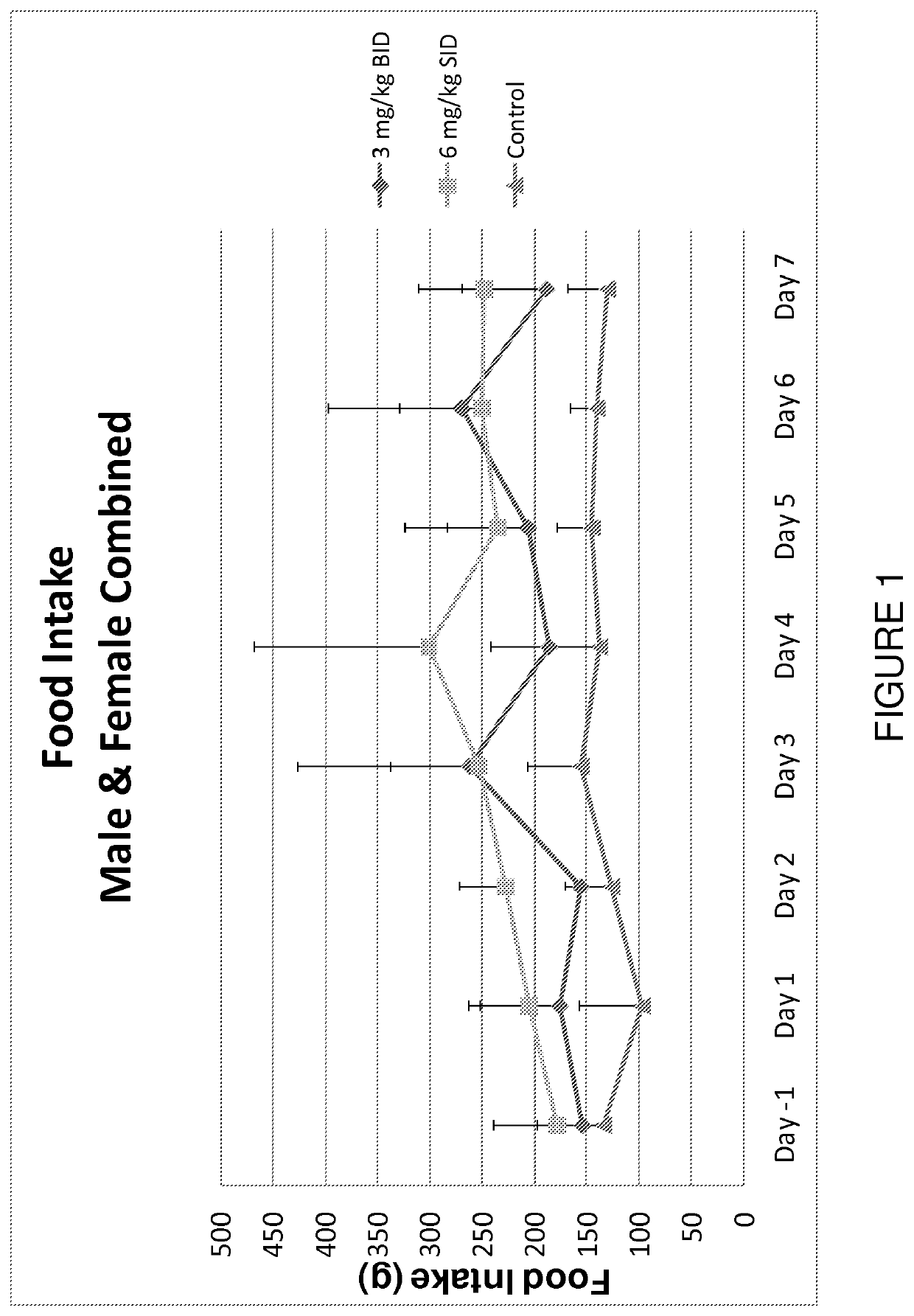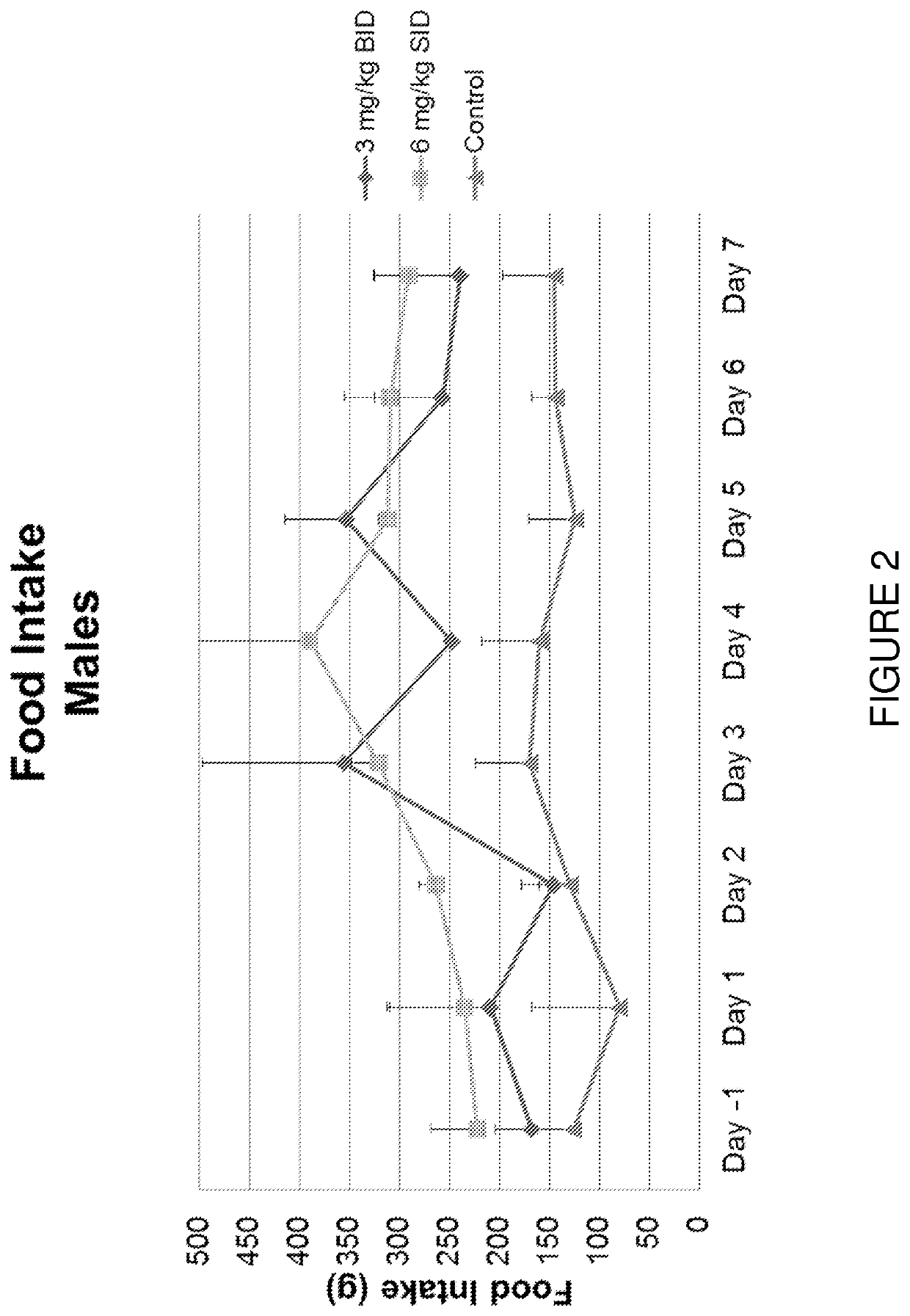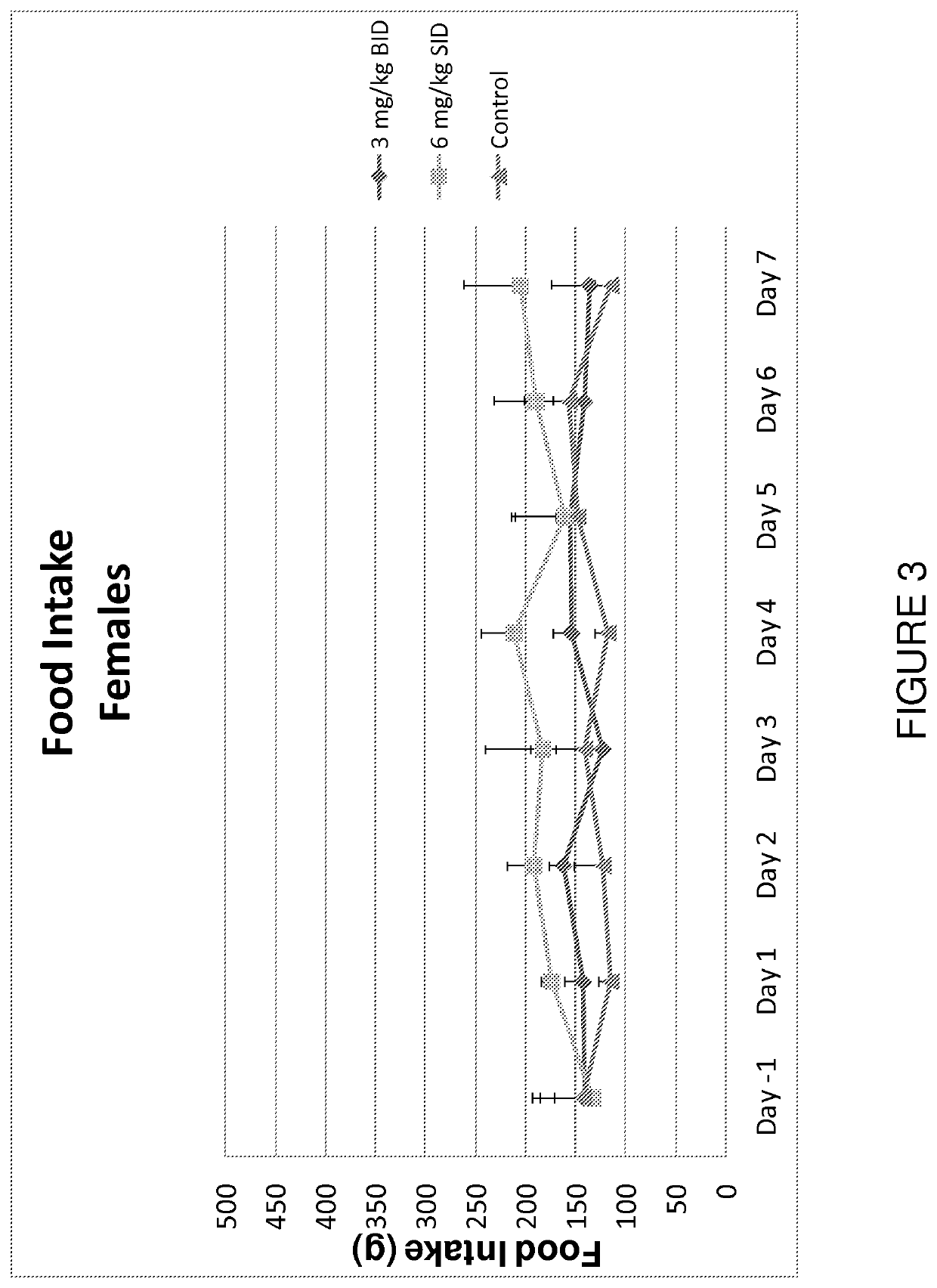Compositions and methods of use of an inappetance-controlling compound
a compound and inappetance-controlling technology, applied in the field of inappetance-controlling compound, can solve the problems of loss of lean muscle, inability to participate in physical activity, other undesirable outcomes for companion animals and owners, etc., to achieve efficient and/or improved weight gain, increase lean muscle mass, and healthy weight gain
- Summary
- Abstract
- Description
- Claims
- Application Information
AI Technical Summary
Benefits of technology
Problems solved by technology
Method used
Image
Examples
example 1
Defining a Dosing Regimen of an Inappetance-Controlling Compound Containing Capromorelin for Inducing Food Intake and Lean Muscle Increases in Companion Animals
[0195]A controlled, seven-day study was performed to assess the impact of different capromorelin-dosing regimens on the production of insulin-like growth factor 1 (hereinafter “IGF-1”), growth hormone (hereinafter “GH”), and cortisol. The different capromorelin-dosing regimens were also assessed for the impact on food intake and changes in body mass.
[0196]Eighteen adult non-naïve Beagle dogs (nine males and nine females) were divided into one of three treatment groups. Each of the three treatment groups included three males and three females. Group A, which was the control group, was dosed twice per day, via oral gavage, with a vehicle (deionized water alone) and was used as a baseline data point for comparison against the active treatment regimens. Group B comprised an active treatment group that received two treatments per ...
example 2
Assessing the Pharmacokinetic Profile of Capromorelin and Dog Acceptability / Palatability
[0206]After selecting the 3 mg / kg dosing regimen, a controlled, eight-hour study was performed to assess the pharmacokinetic profile and acceptability / palatability of different capromorelin formulations. Briefly, twelve Beagle dogs (six males and six females) were randomized into three groups, with four dogs per group (two males and two females). Each of the dogs received a test formulation of capromorelin via a single oral gavage or intravenous (“IV”) administration. This testing included two iterations with the same three groups of dogs with a seven-day washout period between iterations. Serum was collected prior to administration (time 0) and 0.5 h and 1, 2, 4, and 8 hours after capromorelin administration. Serum was tested for capromorelin and IGF-1 concentrations and dogs were observed for clinical changes.
[0207]In addition, the same dogs were used to assess acceptability / palatability. The a...
example 3
Refining Dog Acceptability / Palatability of the Capromorelin Composition
[0213]After selecting formulation 4, a controlled, eight-hour study was performed to refine formulation 4 to improve acceptability / palatability of this capromorelin formulation. Particularly, formulation 4 (as shown above) was mixed with a plurality of different sweeteners, flavors, and / or masking agents to improve dog acceptability / palatability of this formulation. Briefly, twenty Beagle dogs (ten males and ten females) were randomized into five groups, with four dogs per group (two males and two females). Each of the dogs received a test formulation of capromorelin via a single oral dose in the corner of the mouth. This testing included two iterations with the same groups of dogs on consecutive days. However, on the second day, only four groups were necessary because a total of nine formulations were tested (i.e., five formulations tested on the first day and four formulations tested on the second day).
[0214]Du...
PUM
| Property | Measurement | Unit |
|---|---|---|
| weight | aaaaa | aaaaa |
| body weight | aaaaa | aaaaa |
| weight | aaaaa | aaaaa |
Abstract
Description
Claims
Application Information
 Login to View More
Login to View More - R&D
- Intellectual Property
- Life Sciences
- Materials
- Tech Scout
- Unparalleled Data Quality
- Higher Quality Content
- 60% Fewer Hallucinations
Browse by: Latest US Patents, China's latest patents, Technical Efficacy Thesaurus, Application Domain, Technology Topic, Popular Technical Reports.
© 2025 PatSnap. All rights reserved.Legal|Privacy policy|Modern Slavery Act Transparency Statement|Sitemap|About US| Contact US: help@patsnap.com



